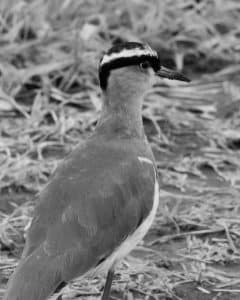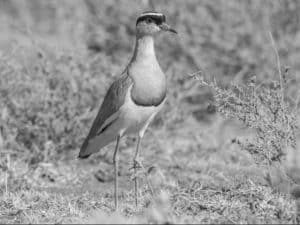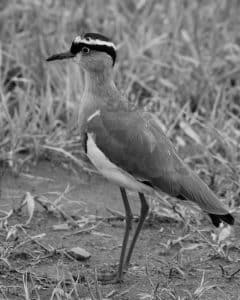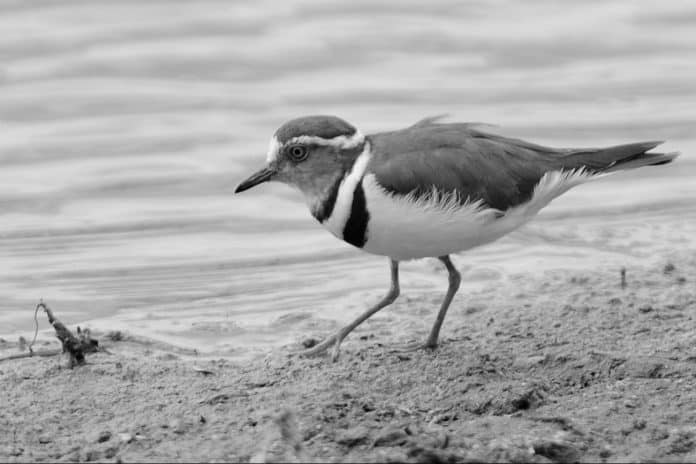Introduction to Plovers and Lapwings
When it comes to birdwatching in Tanzania, there are few species as captivating and enchanting as the plovers and lapwings. These small to medium-sized birds are known for their distinctive appearance and behavior, making them a favorite among bird enthusiasts. In this article, we will explore the habitat, distribution, species, behavior, and conservation status of plovers and lapwings in Tanzania. Additionally, we will provide you with the best places to spot these fascinating birds and offer tips for birdwatching and photographing them.
Habitat and Distribution of Plovers and Lapwings in Tanzania

Plovers and lapwings can be found in a variety of habitats along Tanzania’s shorelines, including sandy beaches, mudflats, and shallow marshes. They are also known to frequent the edges of lakes, rivers, and even agricultural fields. These birds are highly adaptable and can be found across Tanzania, from the coastal regions to the inland wetlands.
One of the most common species of plovers and lapwings found in Tanzania is the Blacksmith Lapwing (Vanellus armatus). This species is easily recognizable by its black and white plumage, with a distinctive black breastband and a bright red bill. Another notable species is the Crowned Plover (Vanellus coronatus), which features a striking black crown and a white face. Other species include the African Wattled Lapwing (Vanellus senegallus) and the White-headed Lapwing (Vanellus albiceps).
Behavior and Characteristics of Plovers and Lapwings
Plovers and lapwings are known for their distinctive behavior and characteristics. These birds are highly territorial and will defend their nesting sites vigorously. They are also known for their distinctive calls, which can range from a melodious song to a loud and piercing alarm call. Plovers and lapwings are ground-nesting birds, creating shallow scrapes in the sand or mud where they lay their eggs.
In terms of appearance, plovers and lapwings have long legs and a slender body. They are well-adapted to their habitat, with long toes that enable them to walk on muddy surfaces and even swim. Their bills are typically long and slender, allowing them to probe the ground for insects and other small invertebrates. These birds are also known for their aerial acrobatics, performing elaborate displays during courtship and territorial disputes.
Conservation Status of Plovers and Lapwings in Tanzania

The conservation status of plovers and lapwings in Tanzania varies among species. While some species, such as the Blacksmith Lapwing, are relatively common and widespread, others are more threatened. The Crowned Plover, for example, is considered near-threatened due to habitat loss and degradation. The African Wattled Lapwing is also facing population declines due to habitat destruction and disturbance.
To protect these birds and their habitats, several conservation organizations in Tanzania are working tirelessly. These organizations focus on habitat restoration, education and awareness programs, and research to better understand the needs and threats facing plovers and lapwings. Additionally, there are ongoing efforts to establish protected areas and promote sustainable tourism practices that benefit both the birds and local communities.
Best Places to Spot Plovers and Lapwings in Tanzania
If you’re eager to catch a glimpse of these beautiful birds, there are several prime locations in Tanzania where you can spot plovers and lapwings. The Rufiji River Delta, located in the Selous Game Reserve, is a hotspot for birdwatching and is home to a variety of species, including the Blacksmith Lapwing and the Crowned Plover. The shores of Lake Manyara, Tarangire National Park, and the Serengeti also offer excellent opportunities to observe these birds in their natural habitat.
For a truly unique experience, consider visiting the Ngorongoro Crater, where you can witness the interaction between plovers and lapwings, as well as other wildlife, in the stunning crater environment. The Mikumi National Park, with its diverse range of habitats, is another great destination for birdwatching enthusiasts. No matter where you choose to go, make sure to bring your binoculars and a good camera to capture the beauty of these birds in action.
Recommended Birdwatching Tours and Guides in Tanzania
To make the most of your birdwatching adventure in Tanzania, it is highly recommended to join a guided tour led by experienced birdwatching guides. These guides are not only knowledgeable about the local bird species and their behavior, but they also know the best spots to find plovers and lapwings. They can provide valuable insights and help you identify different species based on their distinctive features and calls.
Some reputable tour companies that offer birdwatching tours in Tanzania include Birding Tanzania, Tropical Trails Safaris, and Nature Discovery. These companies offer a range of birdwatching itineraries that cater to different interests and skill levels. Whether you are a seasoned birder or a beginner, joining a guided tour will enhance your birdwatching experience and increase your chances of spotting plovers and lapwings.
Tips for Birdwatching and Photographing Plovers and Lapwings

To maximize your chances of successful birdwatching and photography, here are a few tips to keep in mind when observing plovers and lapwings in Tanzania:
- Be patient and observant: Plovers and lapwings can be elusive at times, so take your time and scan the area carefully. Look for any movement or distinctive calls that might indicate the presence of these birds.
- Use camouflage and remain quiet: To avoid disturbing the birds, wear neutral-colored clothing that blends in with the surroundings. Keep noise to a minimum and move slowly and cautiously to avoid startling the birds.
- Bring the right equipment: A pair of good-quality binoculars is essential for birdwatching. For photography, a telephoto lens will allow you to capture detailed images of the birds without getting too close and causing disturbance.
- Study bird behavior: Learn about the behavior and characteristics of plovers and lapwings beforehand. This knowledge will help you anticipate their movements and increase your chances of capturing interesting behaviors with your camera.
- Respect their space: Always maintain a safe distance from the birds and avoid disturbing their nests or feeding areas. Remember that the welfare of the birds should always be your top priority.
Other Bird Species to Look Out for in Tanzania’s Shorelines
While plovers and lapwings are undoubtedly the stars of the show, Tanzania’s shorelines are home to a diverse array of other bird species that are worth observing. The African Fish Eagle, with its distinctive call and majestic appearance, can often be seen perched on trees near lakes and rivers. Flamingos, with their vibrant pink plumage, create a spectacle when they gather in large flocks on the shorelines of Lake Natron and Lake Manyara.
Other notable species include the Great White Pelican, Yellow-billed Stork, and various species of herons and egrets. Keep an eye out for the African Jacana, a unique bird with incredibly long toes that allow it to walk on floating vegetation. Don’t forget to bring a field guide or a birding app to help you identify the different species you encounter during your birdwatching adventure.
Conclusion
Plovers and lapwings in Tanzania offer a captivating and rewarding birdwatching experience. From their distinctive appearance and behavior to their diverse habitats and distribution, these birds are a true delight to observe and photograph. By understanding their conservation status and following responsible birdwatching practices, we can ensure that future generations have the opportunity to appreciate the beauty of these unique species. So, pack your binoculars, grab your camera, and head to Tanzania’s shorelines to witness the skipping dance of plovers and lapwings in their natural habitat. Happy birdwatching!


































